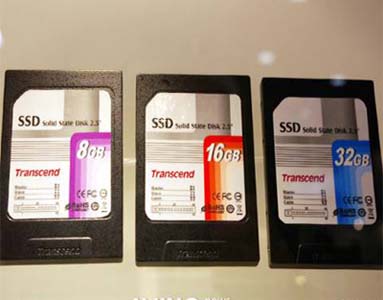Lack of moving parts, low energy use, makes SSD drives appealing
 Munich - Solid State Drives (SSD) are becoming standard in modern notebooks and net books, often replacing traditional hard drives. More and more, it's becoming common to retrofit older computers with SSDs, either as external hard drives or with PCMCIA cards . Anyone in need of an especially fast hard drive should do well with an SSD. They work much faster than standard drives, which rely on magnetic storage, reported the German magazine PC Welt recently. A test of 10 SSD drives showed that users usually enjoy faster speeds, both with index and data searches, the report said.
Munich - Solid State Drives (SSD) are becoming standard in modern notebooks and net books, often replacing traditional hard drives. More and more, it's becoming common to retrofit older computers with SSDs, either as external hard drives or with PCMCIA cards . Anyone in need of an especially fast hard drive should do well with an SSD. They work much faster than standard drives, which rely on magnetic storage, reported the German magazine PC Welt recently. A test of 10 SSD drives showed that users usually enjoy faster speeds, both with index and data searches, the report said.
Anyone interested in buying an SSD drive has a choice between MLC and SLC technology. An SLC device costs about 9 euros (12 dollars) per gigabyte, while the MLC costs about 1.80 euro per gigabyte. PC Welt recommends that anyone who can afford one, should opt for the SLC, since it offers steady high writing speeds and long life.
Compared with standard drives, SSDs have relatively small capacities. Magnetic drives have reached capacities of a terabyte (TB), with one producer even announcing a 2 TB model. Currently, SSD technology offers no more than 250 GB, and that costs 600 euros. For comparison's sake, a 500 GB standard drive costs significantly less than 100 euros.
Samsung offers an SSD drive with a 256 GB capacity. Meanwhile, Verbatim has a unique offer that could be of interest for notebook users. Its PCMCIA Express Card Standard - coming in either 16, 32 or 64 GB versions - lets users pop a card into their notebook to expand its storage space. The card offers more space and quicker speeds than a USB stick.
Meanwhile, Buffalo Technology has an SSD external drive for sale. The LinkStation Mini transfers data wirelessly and thanks to the SSD technology is practically noiseless, according to the Dusseldorf- based manufacturer. The drive comes with two SSD drives, each containing 120 GB of space. This allows double copies, which protects against data loss. But that also pushes the price up toward 900 euros.
What makes SSDs so expensive? Unlike standard drives, they have no moving parts, making them more shock resistant. Notebook users in crowded trains, for example, need not fear a crashed drive if bumped into by fellow passenger. Additionally, SSDs are silent and relatively energy efficient.
SSD is also faster than standard drives when it comes to accessing data in standard applications. That's immediately obvious when switching on a computer: start-ups time are half the normal rate.
Standard drives often split up data, spreading connected information across different parts of the drive. Tracking down all that data can make recall slow. But SSD skips that problem because it accesses all data simultaneously. But there are exceptions: when it comes to accessing larger linked blocks of data, then standard drives remain faster. (dpa)